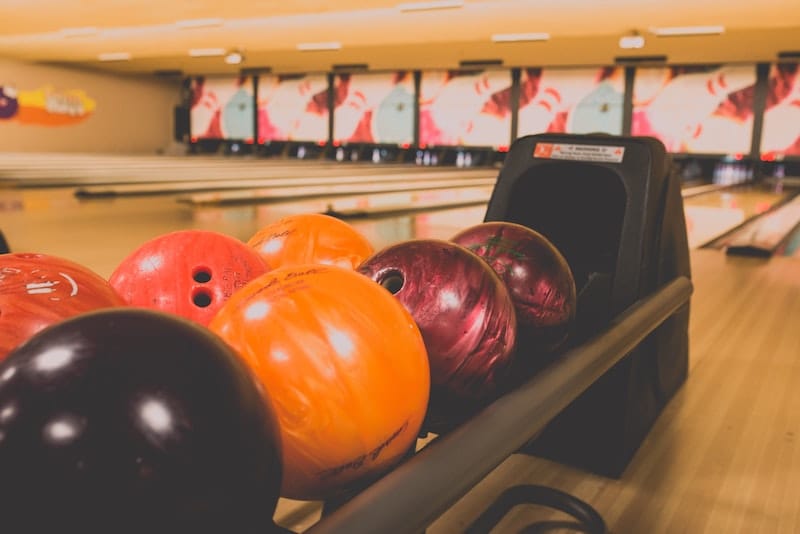For both casual and league bowlers, one of the most common questions is “What should my average score be?” Bowling averages vary widely based on experience level, so what is considered a “good” score depends greatly on who you ask. This guide examines average bowling scores for everyone from beginners to professional players.
What Is a Good Bowling Average for Beginners?
For first-time or novice bowlers just learning the game, a good average score per game is around 70-100. Beginners should not get discouraged by low scores at first. Simply focusing on bowling technique, having fun, and seeing gradual improvement is a win when you’re starting out.
With a few weeks of practice, new bowlers can typically average 100-120 points per game. Breaking 100 is an excellent milestone for a budding bowler. Once technique and consistency improve, scores between 120-150 become achievable for many recreational beginners.
What Is a Good Average Score for an Intermediate Bowler?
For non-league bowlers who have moved past the beginner phase but aren’t experts yet, a good average bowling score is 140-160.
At this intermediate skill level, bowlers have developed fundamental competence. They have better control, reasonably consistent aim, and the ability to pick up spares.
Intermediate players may occasionally break 170 or higher with good games. But averaging 150-170 is respectable for passionate amateur bowlers with 1-2 years experience.
What Do Good Bowlers (Non-League) Average?
Bowlers who have accumulated several years of bowling experience typically average 160-200 per game in open play.
Experienced casual players have honed skills like optimizing footwork, targeted strike throws, and adjusting delivery for different lane conditions. Their shot consistency improves scoring.
Averaging around 180 demonstrates advanced capabilities for a frequent non-competitive bowler. But even long-time bowlers still have highly variable scores between games.
What Is a Good Bowling Average for League Players?
For bowlers competing in organized leagues, averages are generally higher than open play. Good league averages span:
- Beginner: 110-150
- Intermediate: 150-180
- Advanced: 180-220+
The structure, weekly practice, and focus of league bowling helps experienced players achieve scores above 200. However, blowing past your standard average carries risk of establishing a new benchmark you can’t maintain.
What Do Professionals Bowlers Average?
At the highest levels, professionals average over 200 in competitions. On the PBA Tour, players must maintain at least a 206 average over 42 games to retain an exempt player status.
The top 10 PBA players in 2022 had staggering averages between 227 and 238. But even elite players see significant variability between events and lane conditions.
How Does Scoring Work in Bowling?
Understanding bowling scoring provides context for what makes a good score. Here are the basics:
- Each game uses 10 frames. A full game is 10 frames.
- Frames 1-9 allow up to 2 ball throws per frame. Frame 10 allows 3 balls.
- The goal is to knock down all 10 pins with strikes and spares.
- A strike is knocking down all pins on the first throw. It scores 10 plus next two ball totals.
- A spare is clearing all pins on the second throw. It scores 10 plus next ball rolled.
- Knocking down less than all pins scores as the number downed.
- A perfect 300 game requires 12 straight strikes. Most games are below 250.
This scoring system enables elite players to achieve high scores through strikes. But recreational players should aim for consistency with some strikes or spares mixed in.
What Is the Average Bowling Score by Age?
Bowling ability follows a general progression as players gain experience over time. But of course it also depends on your bowling talent, your physical ability and the number of hours and years that you have bowled.
Here are typical youth and adult average score benchmarks:
Ages 10-12 (Kids): 80-120
Pre-teens learning bowling fundamentals average around 100. Those practicing regularly may reach 120. Focus is on skills development and enjoying the sport.
Ages 13-19 (Teens): 120-160
Teen scores range widely based on athleticism, degree of play, and improvement pace. But averages in the 140-150 suggest solid skills. High school league teens may progress faster.
Ages 20-30 (Young Adults): 140-180
Bowlers in their 20s and 30s hit their athletic peak. Those bowling frequently can achieve averages approaching 180 given enough practice time to hone abilities.
Ages 31-50 (Adults): 150-200
Adults in their prime bowling years average from the mid-100s on the casual end to near 200 for seasoned veterans. League players might hit 200+ during this period.
The takeaway is that average scores steadily rise from childhood into adulthood and the most dedicated prime bowling years. But players can excel at any age with regular play.
What Factors Affect Your Bowling Average?
Beyond age and skill level, additional factors impact scoring ability and averages:
- Bowling frequency – Scores improve from week-to-week play.
- Types of lanes – More oily lanes keep balls from hooking as much.
- Environmental conditions – Altitude and humidity affect ball motion.
- Lane transition – More bowlers deplete oil patterns, affecting hook potential.
- Equipment – Pro-grade balls, fitted shoes and accessories aid scoring.
- Mental game – Confidence, focus and composure affect consistency.
- Physique – Strength, flexibility and athleticism influence ability.
So consider equipment choices, lane conditions, and physical and mental game when evaluating averages. Compare yourself to counterparts under similar scenarios.
What’s a Good Score for a “Perfect” Bowling Game?
The highest possible score in a bowling game is 300, achieved by rolling 12 consecutive strikes. But hardly any recreational games end with a score over 250.
A more realistic ‘perfect game’ for casual players is all strikes and spares, even if not successive strikes. This would yield a score around 200.
For beginners, a ‘perfect game’ might simply mean achieving their highest score to date through great focus, spares, and a lucky strike or two.
At any skill level, new personal bests demonstrate positive momentum. The joy comes more from beating your own records than posting the unrealistic maximum scores only seen on the pro level.
How Likely Is It to Throw a Perfect Game in Bowling?
The odds for a PBA (Professional Bowlers Association) bowler rolling a 300 are 460 to 1. In contrast, for the average bowler, the odds skyrocket to 11,500 to 1. This stark difference in probabilities highlights the vast gap in skill and consistency between professionals and casual players. (Source: https://www.golfdigest.com/story/records-rarities-the-unlikely)
While there’s no pressure to make an ace in other sports, and it’s often aided by sheer luck, achieving a perfect game in bowling is a different beast altogether. It’s not just about one lucky shot; it’s about delivering 12 impeccable shots consecutively. The journey to a 300 game is fraught with increasing tension. After stringing together six or seven strikes, the atmosphere becomes palpable with anticipation. By the time a bowler reaches the 10th frame with a perfect score in sight, it’s not uncommon for the entire bowling alley to pause and watch.
This mounting pressure is a testament to the challenge of bowling a perfect game. It’s not merely about skill; it’s also about mental fortitude. While a novice in other sports might occasionally achieve an ace with a single lucky shot, in bowling, one needs to be consistently above average in talent to even come close to a 300. The final strike, the 12th one, carries with it an immense weight of expectation, making it one of the most nerve-wracking moments in the sport.
In essence, while the odds might seem similar for average players across different sports, the realities of achieving perfection in bowling demand a unique blend of skill, consistency, and mental strength.
Final Thoughts
Ultimately, a ‘good’ bowling score depends heavily on age, skill level, how often you play, and the scoring conditions. Comparing yourself only to reasonable peers bowling under similar lanes and scenarios gives the truest measure of averages. Regardless of score, enjoying personal progress as a lifelong bowler is what matters most.


